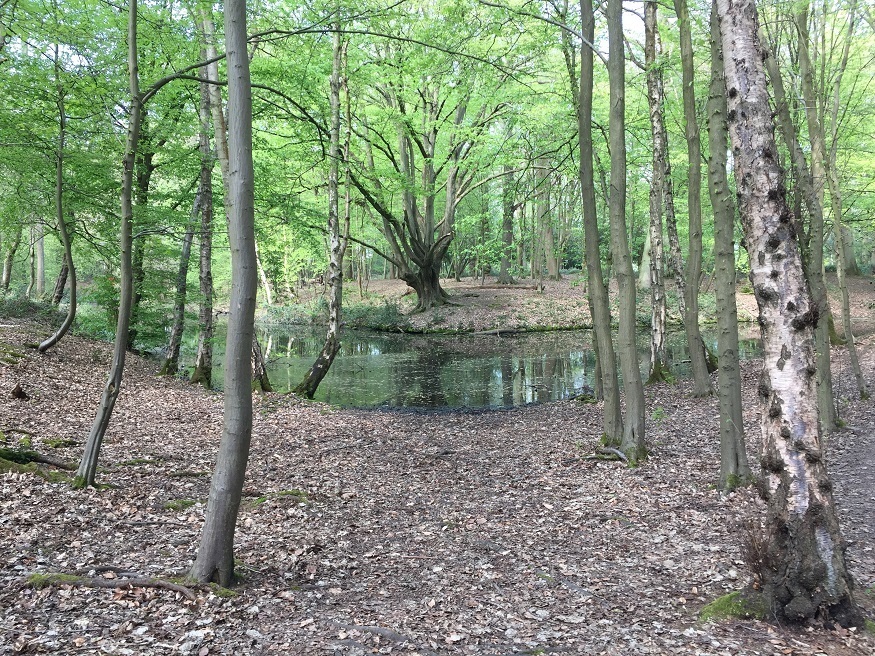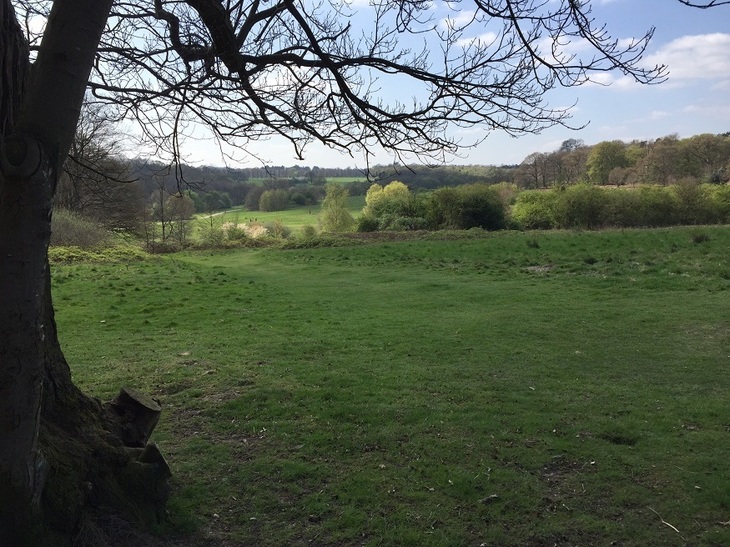
Camelot was the seat of King Arthur and home to the Round Table. According to legend — or at least the version we grew up with — Camelot was a merrie old castle, where knights would eat spam a lot, and dance whenever they were able. It was a silly place.
Its location has always been a mystery. Candidate Camelots have been proposed as far apart as Cornwall, Winchester and Essex. A recent theory even points to the suburbs of Huddersfield.
But surely the once and future king would have chosen the London area for his court? Everyone knows that our city sucks in all the talent. Plus, the old sword-in-the-stone incident supposedly took place in a London churchyard.
As it happens, there is a candidate site for Camelot within the capital... right on the edge of London in the borough of Enfield.

Trent Country Park is a gorgeous plot of 413 acres just a short stroll from Cockfosters tube station. If you've never been, go take a look. The rolling hills and quiet woods are a joy to explore. Tucked away at the northern periphery, hidden from the main footpath, is an ancient landscape feature. Its name: Camlet Moat.
No one is quite sure who put it here. The moated island is probably a medieval structure serving the royal hunting grounds of Enfield Chase, but may date back further. The name is intriguingly close to Camelot and, indeed, the area is recorded as 'the Manor of Camelot' in 1440.
Could this be the fabled court of King Arthur? Doubtful. The island only measures 69 metres by 53 metres — about the size of three tennis courts, to use the standard unit.

Yes, you could squeeze in a Round Table, a cohort of knights and a larder full of spam, but there wouldn't be much room for anything else. If this was once Camelot then its ennobled denizens would have been squashed to jam-a-lot.
According to Trent Park's website, the moated island probably served a less glorious purpose.
"One use of the lodge would have been to detain individuals who had broken the harsh forest laws. The moat would also have helped to drain the site, been used for rubbish disposal and possibly for keeping fish."
It's hardly the stuff of Grail quest. Still, there are many who think there might be a connection to Arthurian legend, including Christopher Street who wrote a short book about the site's history (and potential history).
Today, the island is a quiet, contemplative place, reached by a narrow causeway at the western end. Our short visit was interrupted by nobody, not even a duck. Camlet or Camelot is clearly important to some people, though. You're likely to find pagan offerings or other talismen in the bushes.
It's not just the spiritual who care about the island. Conservationists and counter-conservationists appear to be engaged in a struggle for the shears, like Gawain and the Green Knight.

If you'd like to seek out Camelot yourself, take the Piccadilly line to Cockfosters then find Trent Park a 10 minute walk to the north. The moat is poorly signposted, but if you follow the London LOOP markers, you'll go right past it. Be sure to also check out the animal sanctuary, especially if you have little ones and have to push the pram-a-lot.




